Risk Management Plans: Indoor Facility Safety and Hazard Assessment
VerifiedAdded on 2022/08/25
|8
|824
|27
Homework Assignment
AI Summary
This homework assignment presents a risk management plan for an indoor fitness facility. It includes a risk assessment matrix that identifies safety hazards, their potential consequences, and the likelihood of occurrence. The assignment details risk ratings and proposes control measures to mitigate or eliminate the identified hazards. The student analyzes various aspects of the facility, including equipment maintenance, trip/slip hazards, hygiene, noise levels, ventilation, flooring, and space requirements. For each hazard, the student suggests multiple control measures, such as regular equipment checks, proper floor maintenance, hygiene practices, and appropriate noise and ventilation management. The assignment aims to ensure a safe and healthy environment for clients and staff within the indoor fitness facility. The assignment also covers outdoor venue risk assessment which includes hazards such as collision with vehicles, trips and falls, unsafe equipment, sun burn, and extreme weather conditions. The assignment is a valuable resource for students studying workplace health and safety and risk management in the fitness industry.
1 out of 8
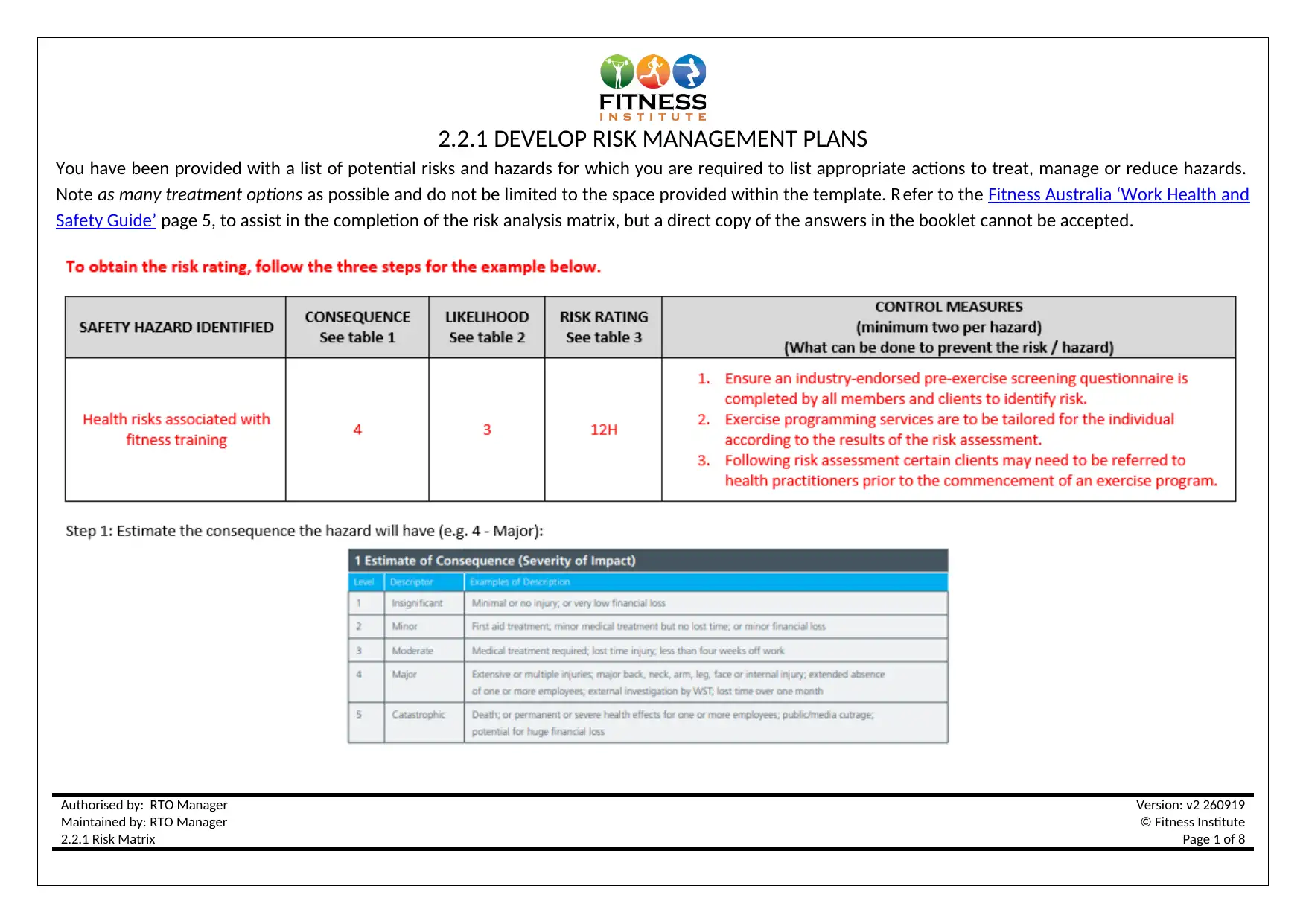
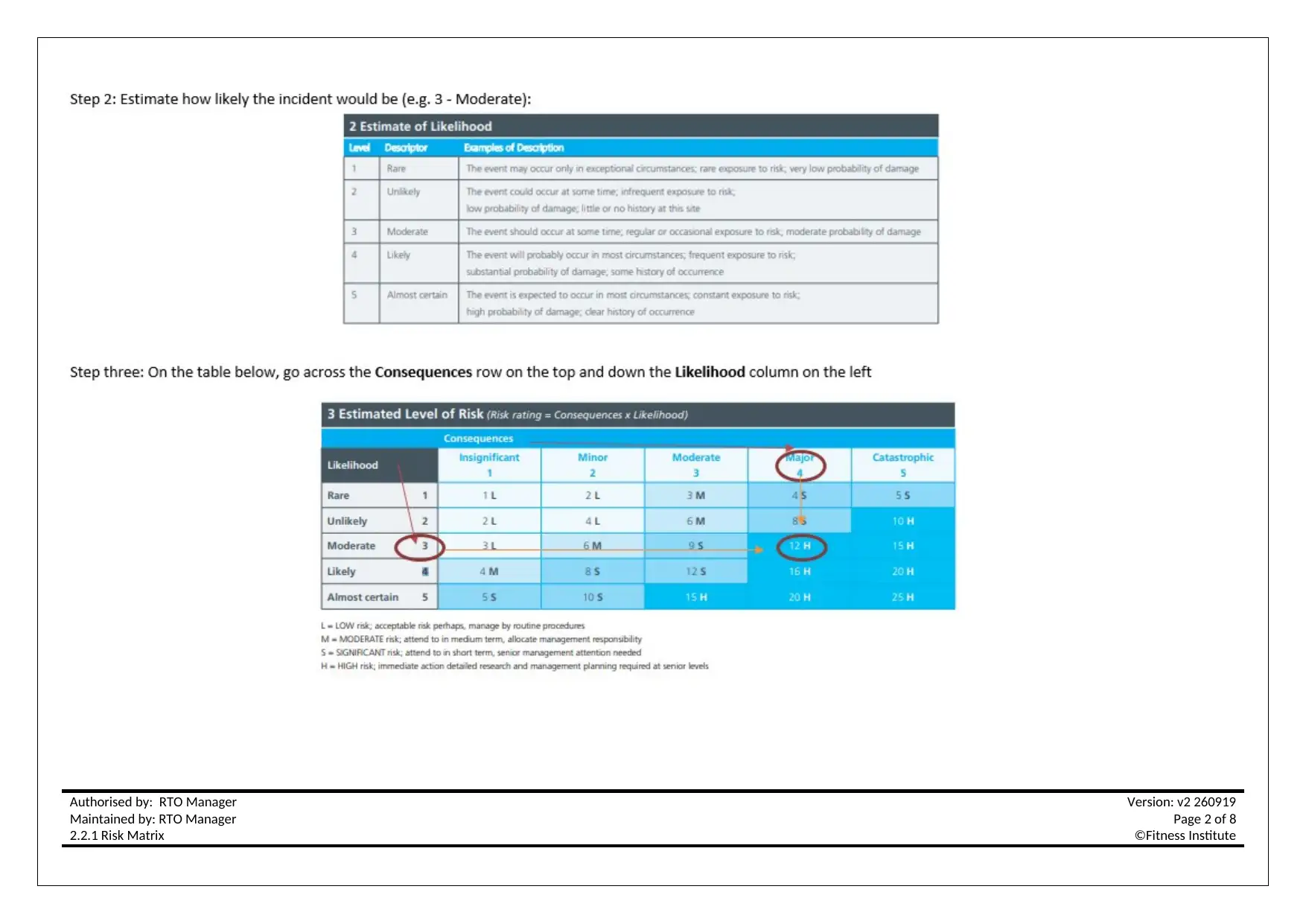
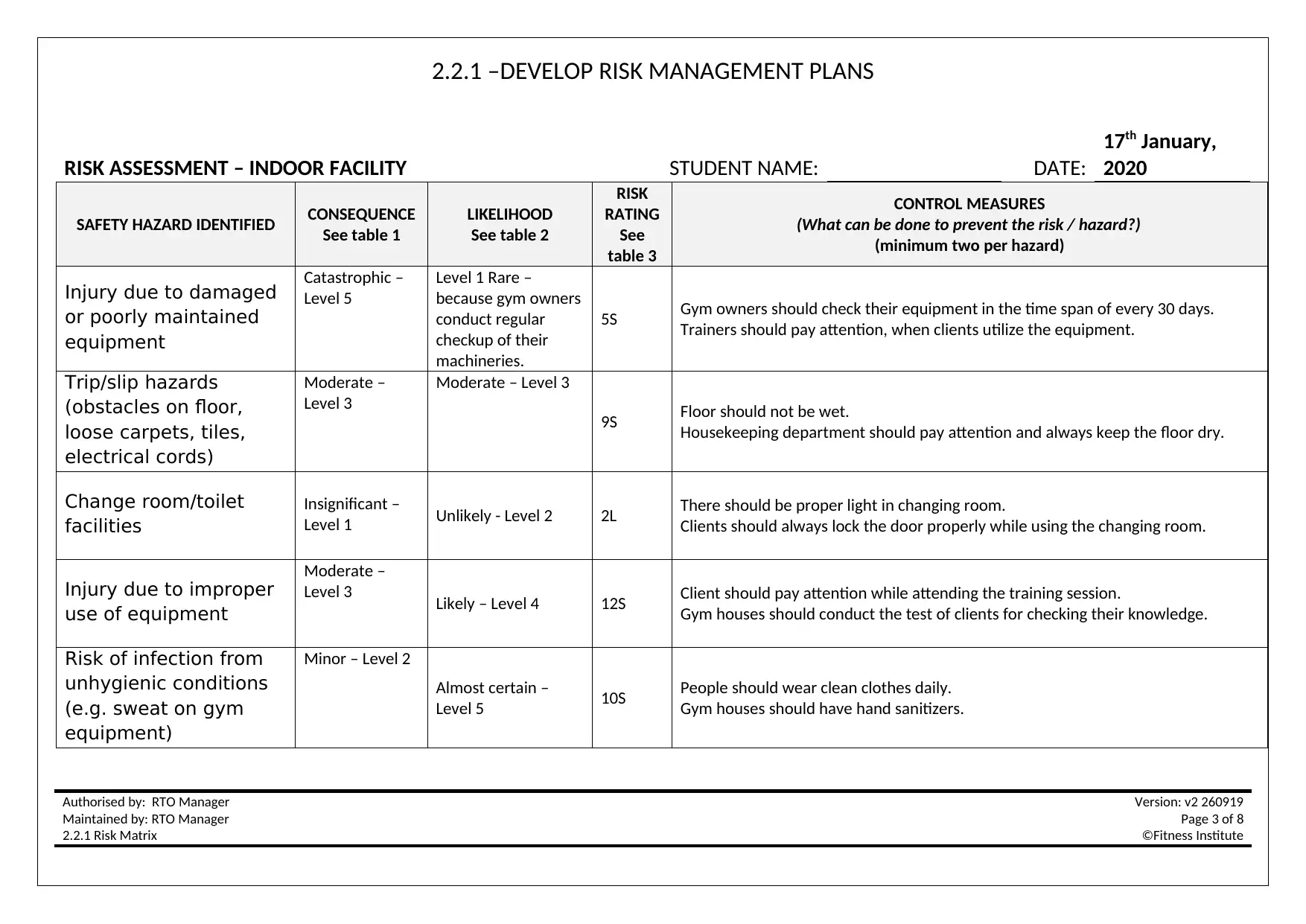

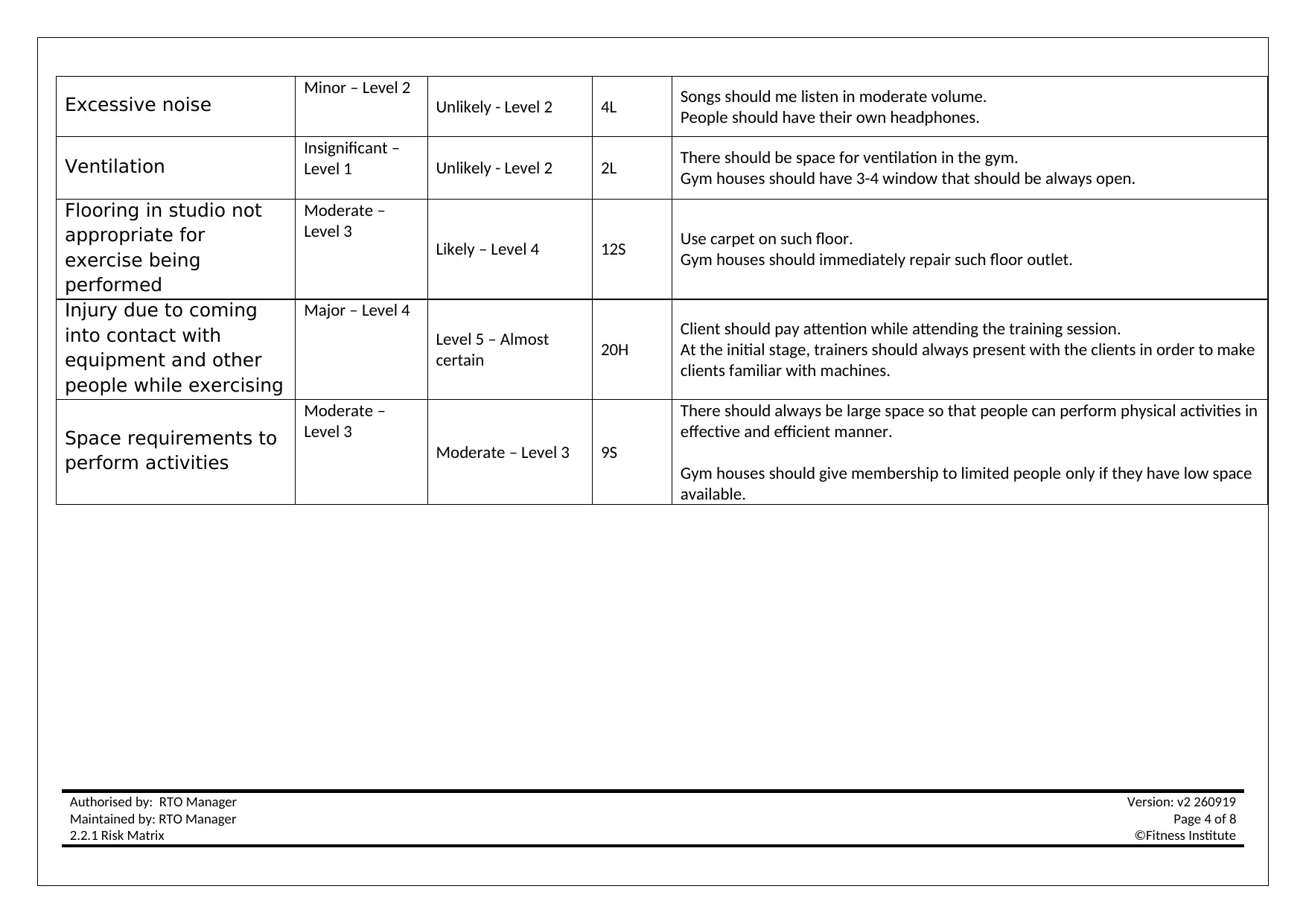
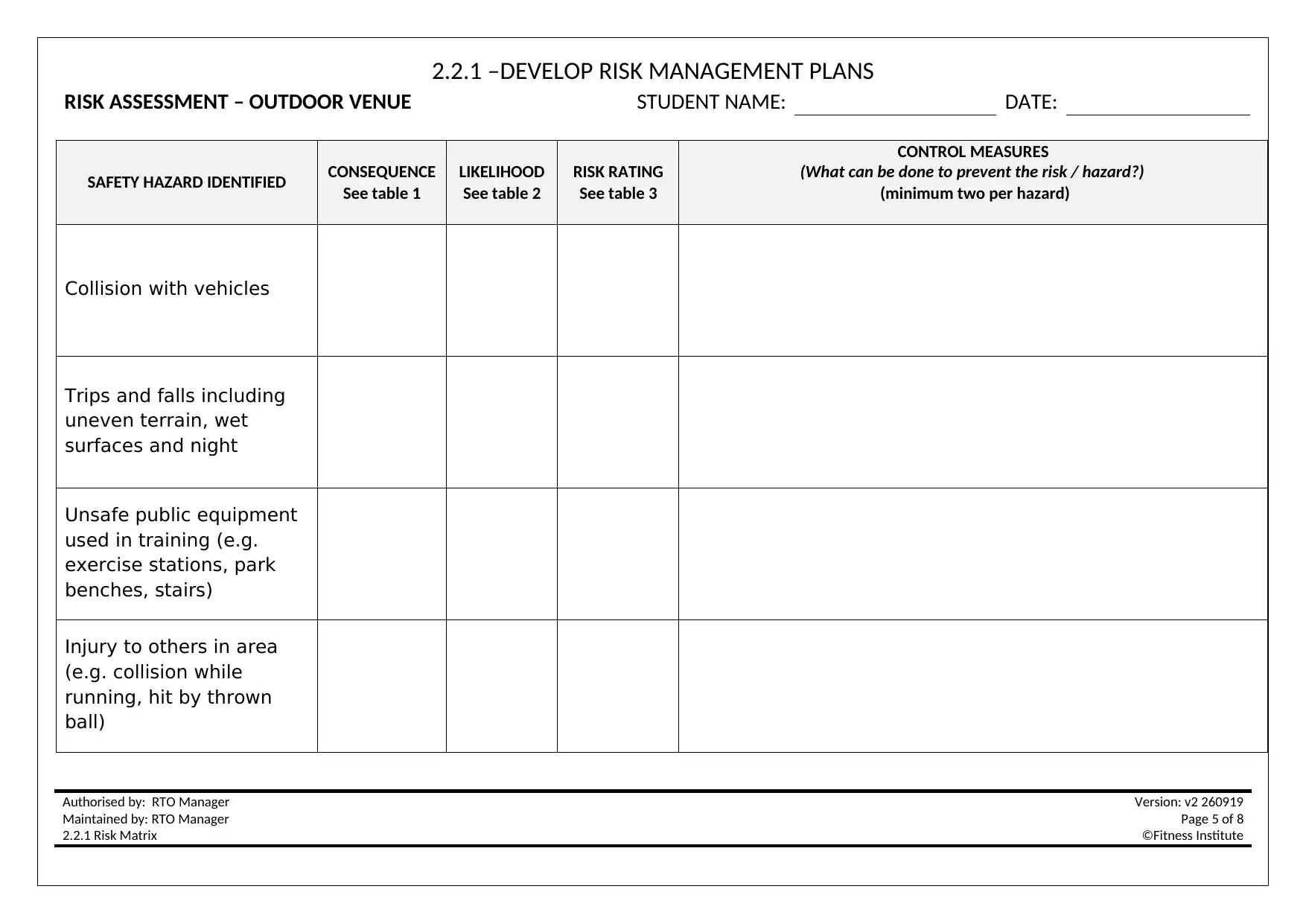
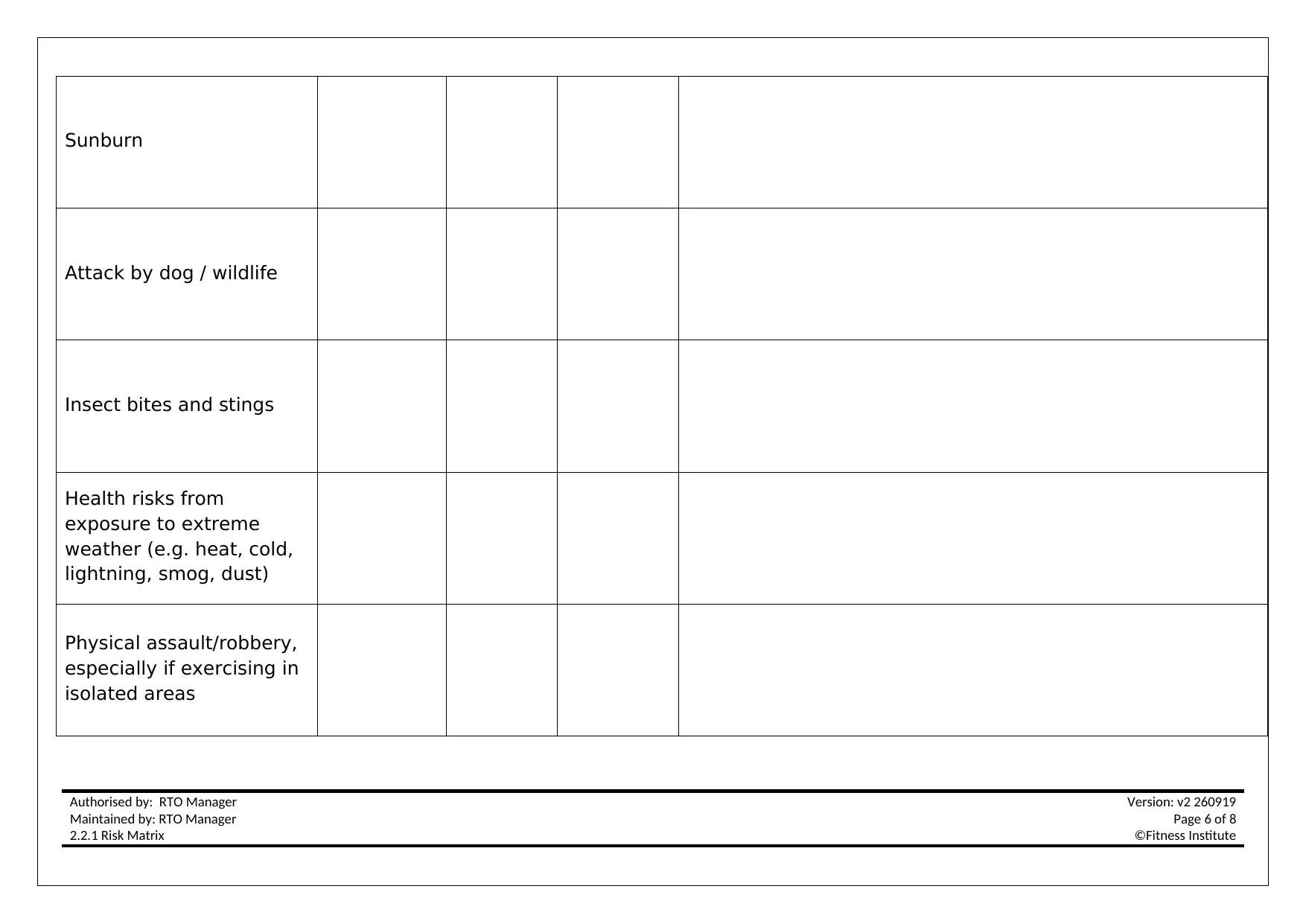
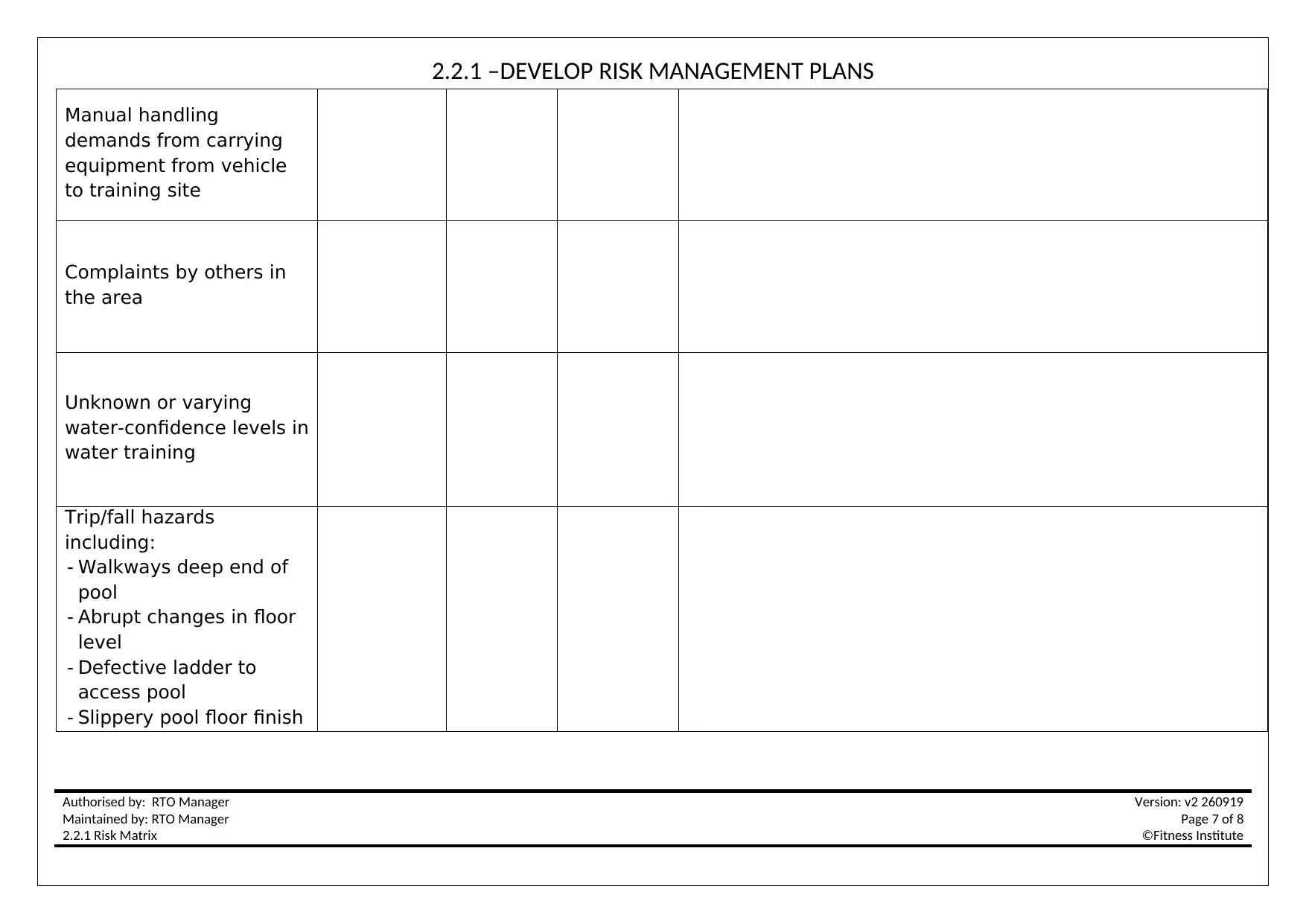
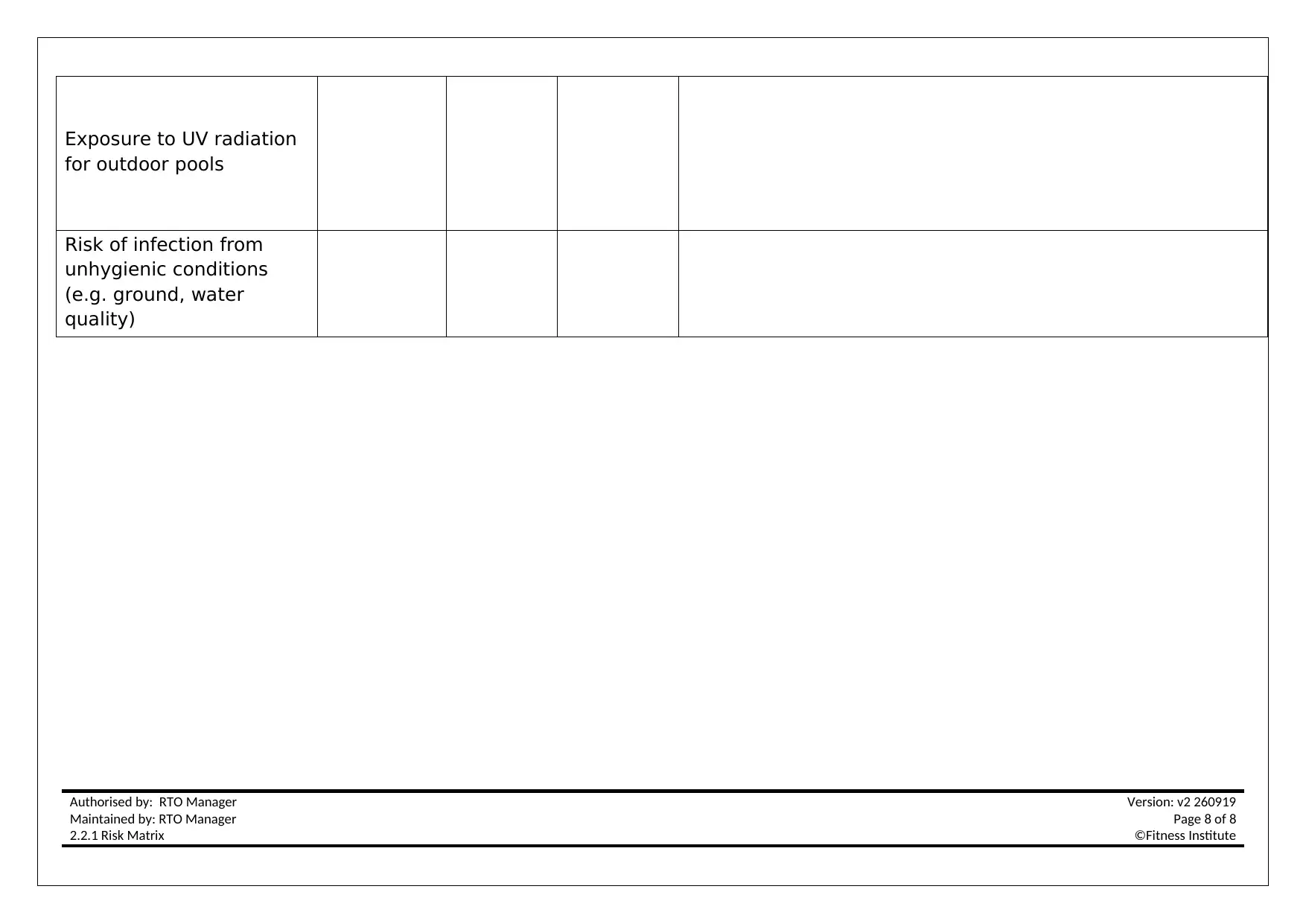
![[object Object]](/_next/static/media/star-bottom.7253800d.svg)